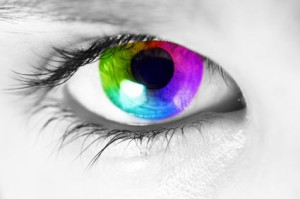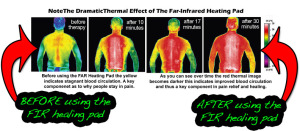 Pain is a highly individual complex experience involving biochemical and neurological reactions. Your experience of pain from, say, stubbing your toe will be entirely different from that of your spouse or colleague – even if the same amount of force is exerted.
Pain is a highly individual complex experience involving biochemical and neurological reactions. Your experience of pain from, say, stubbing your toe will be entirely different from that of your spouse or colleague – even if the same amount of force is exerted.
What shapes an individual’s pain sensitivity or tolerance is a complex product of nature and nurture. According to researcher Inna Belfer:[i]
“Humans are very different when it comes to pain. Some get painful piercings and tattoos; others can not stand even a flu shot. Interindividual variability is one of the main characteristics of human pain on every level including the processing of nociceptive impulses at the periphery, modification of pain signal in the central nervous system, perception of pain, and response to analgesic strategies.
As for many other complex behaviors, the sources of this variability come from both nurture (environment) and nature (genes).”
In a new study, Belfer and colleagues analyzed 58 pregnant women and found that those with light-colored eyes (blue or green) experienced less pain during childbirth than women with dark-colored eyes (brown or hazel). This might seem odd, until you remember your high-school science. Eye color is a product of genetics. Specifically, your eye color is based on 12 to 13 different genetic markers.
Those genes have much more of a purpose than simply dictating your eye color. They influence many other things in your body as well, some of which are just now being uncovered. NCX-4, for instance, which is associated with darker eyes, is also linked to pain.[ii]
What Else Influences Your Level of Sensitivity to Pain?
Aside from eye color, it’s widely known that people with red hair (caused by a mutation in a gene called melanocortin-1 receptor (MC1R)) are more sensitive to certain types of pain and may be resistant to some pain relievers.[iii] But it’s not only genetics that influences your pain experience. As Martin Grabois, MD, professor and chair of the department of physical medicine and rehabilitation at Baylor College of Medicine, told WebMD:[iv]
- People with depression and anxiety are more sensitive to pain
- Smoking and obesity are associated with greater pain
- Athletes typically have a higher pain tolerance than non-athletes
Also intriguing, studies on identical twins (who share 100 percent of their genes) show they have differences in pain sensitivity as a result of epigenetic changes (when a gene may be either turned “on” or “off”).[v] One study found differences in nine genes related to pain sensitivity among identical twins,[vi] and since the twins started out with identical genes, the epigenetic changes must have been due to factors in their lifestyle and environment. In other words, your sensitivity to pain may not be set in stone. Rather, it might be adjustable depending on your lifestyle.
Real Steps to Eliminate Pain – Even if You’re Highly Pain-Sensitive
No matter what your eye color or current pain-sensitivity level is, there are strategies you can take to eliminate pain (and I’m talking about its underlying causes, not just covering it up with potentially toxic medications).
If you have back pain, get your FREE copy of The 7-Day Back Pain Cure now. You’ll learn about three new treatments that deliver fast and lasting pain relief in as little as 60 seconds, plus discover the seven mistakes that nearly all back pain sufferers make. You’ll also find out the five hidden causes of back pain and how to get rid of the pain now and prevent pain flare-ups in the future.
If you’re seeking the most powerful form of immediate relief from back pain in the meantime (while also healing underlying causes), far-infrared heating pads harness the power of the sun to help soothe and heal your pain from the inside out. Most sources of heat are ambient. This means they warm the air around you with heat that barely penetrates your skin. Far-infrared rays, which are a form of solar energy on the opposite side of the visible spectrum of sunlight, pass right through your skin – as much as three inches deep – and gently warm you from the inside out.
 This heat has therapeutic effects, helping to boost your circulation, break down and flush out toxins from your tissues, relax muscle cramps and more.
This heat has therapeutic effects, helping to boost your circulation, break down and flush out toxins from your tissues, relax muscle cramps and more.
In a study created by Nishi Kyusyu University in Saga, Japan, which tested participants in pain severe enough that they couldn’t work, they discovered that by adding far-infrared heat therapy to their treatment (including cognitive behavioral therapy, rehabilitation, and exercise therapy) 77% of the participants in the study were able to return back to work![vii]
Only far-infrared heat can do this, so to experience soothing heating relief from pain now, try the far-infrared heating pad … it works so well, we like to call it the far-infrared ‘healing’ pad instead.
[i] Scientifica (Cairo). 2013;2013:415279.
[ii] Daily Caller June 10, 2014
[iii] Anesthesiology. 2005 Mar;102(3):509-14.
[iv] WebMD Pain Tolerance and Sensitivity
[v] Medical News Today February 5, 2014
[vii] International Congress Series Volume 1287, April 2006, Pages 298-303



I have an infra red heating pad and I use it every evening. It is awesome and it really helps with back pain. I am on my second one because I wore out the first one. I would recommend it to everyone with any kind of pain.